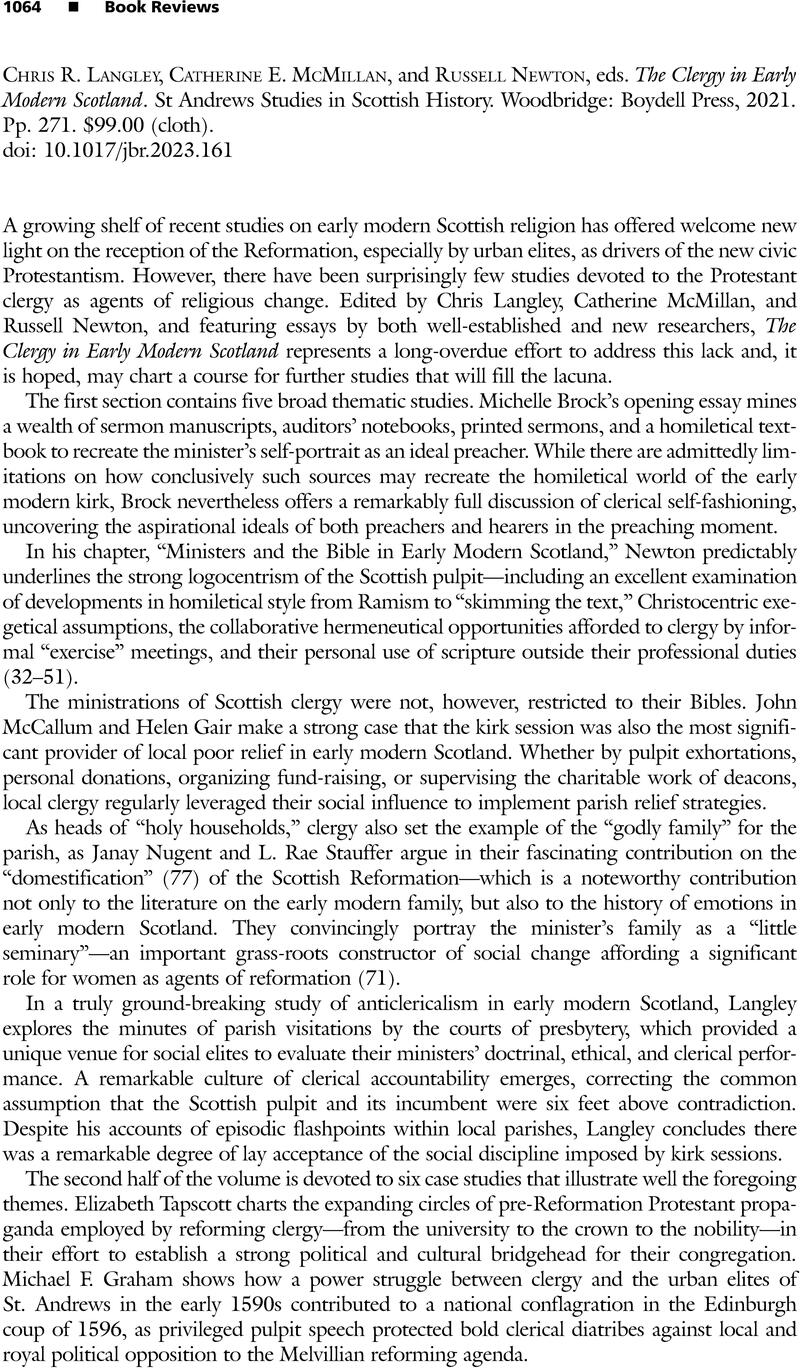No CrossRef data available.
Article contents
Chris R. Langley, Catherine E. McMillan, and Russell Newton, eds. The Clergy in Early Modern Scotland. St Andrews Studies in Scottish History. Woodbridge: Boydell Press, 2021. Pp. 271. $99.00 (cloth).
Review products
Chris R. Langley, Catherine E. McMillan, and Russell Newton, eds. The Clergy in Early Modern Scotland. St Andrews Studies in Scottish History. Woodbridge: Boydell Press, 2021. Pp. 271. $99.00 (cloth).
Published online by Cambridge University Press: 19 February 2024
Abstract
An abstract is not available for this content so a preview has been provided. Please use the Get access link above for information on how to access this content.

- Type
- Book Review
- Information
- Copyright
- Copyright © The Author(s), 2024. Published by Cambridge University Press on behalf of The North American Conference on British Studies



